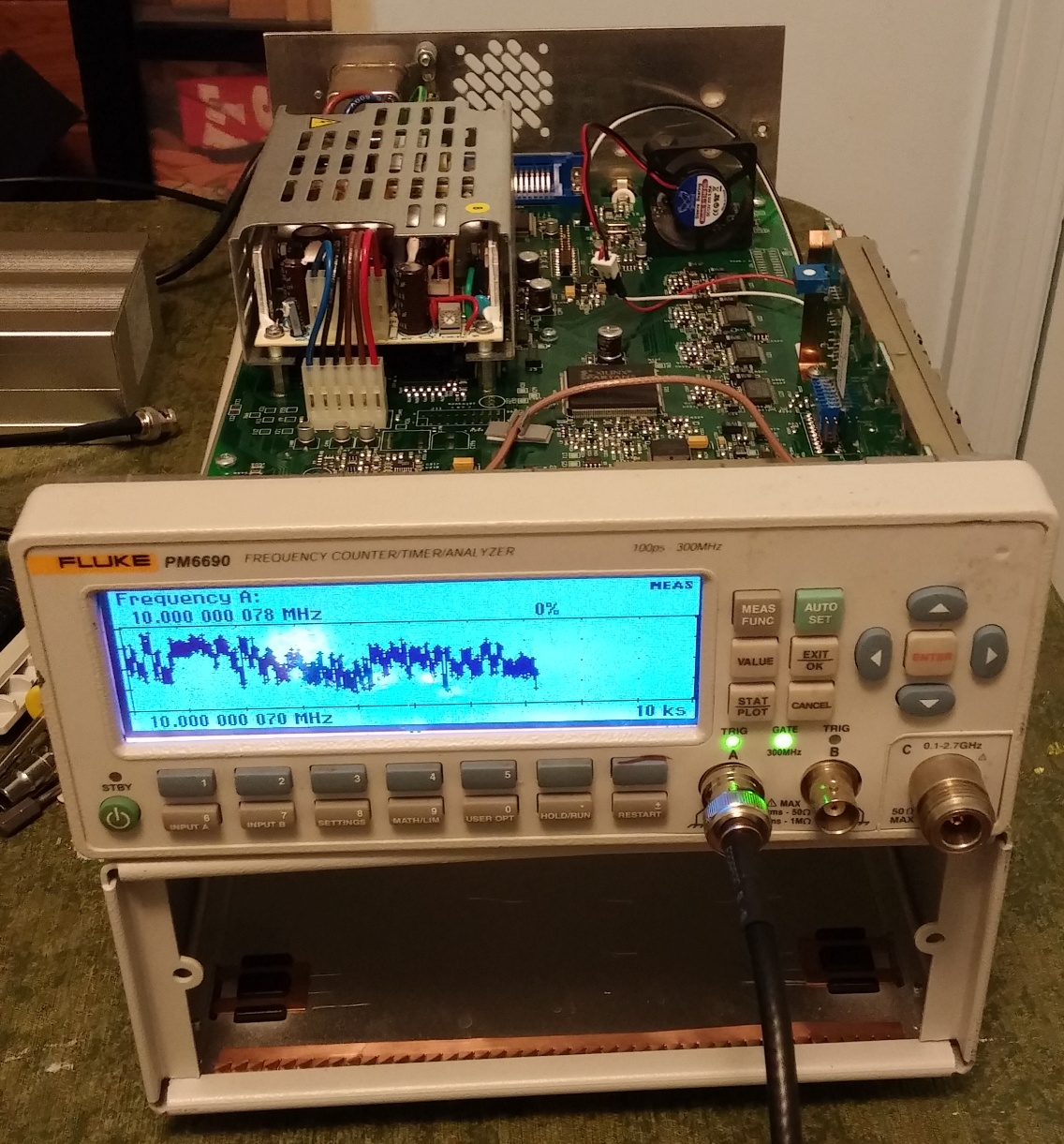I snagged a used (and somewhat beat up) one of these counters and looked around a bit - doesn't seem to be a lot of info outside of the official docs (which do include a schematic!) I figured I wanted to clean it up and check things out for myself anyways, so why not post pics. I've also heard it suggested that the PM6690 is a rebadged Spectracom CNT-90, and given the look of the front panel and the specs, it did seem likely. Well I can say for certain that is the case

It's evident that my counter has been punched, scraped, and stuck to quite a bit in its lifetime, but best I can tell it's still in great shape.
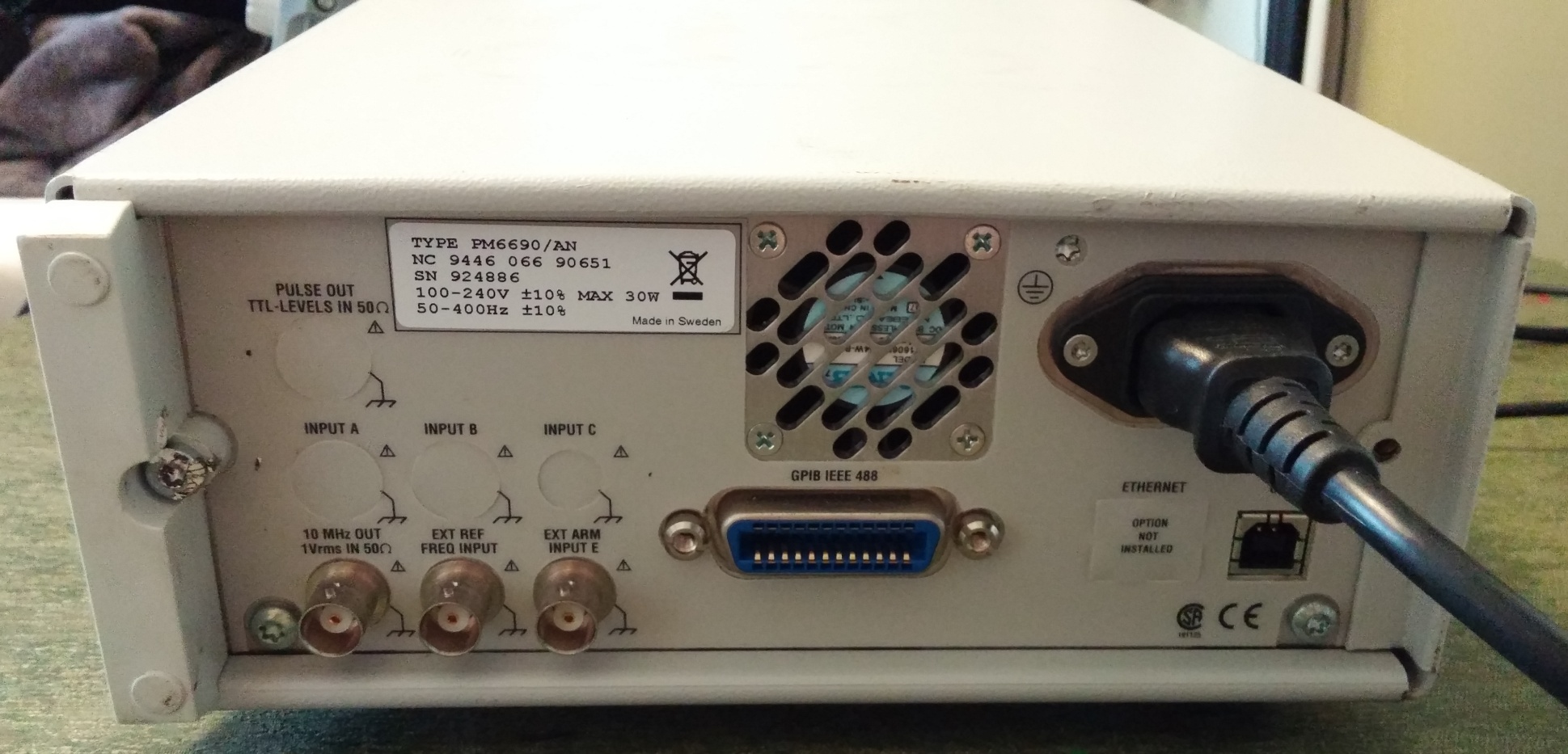
And it's one of those long form factor units, next to it is a Siglent SDG2082X function gen
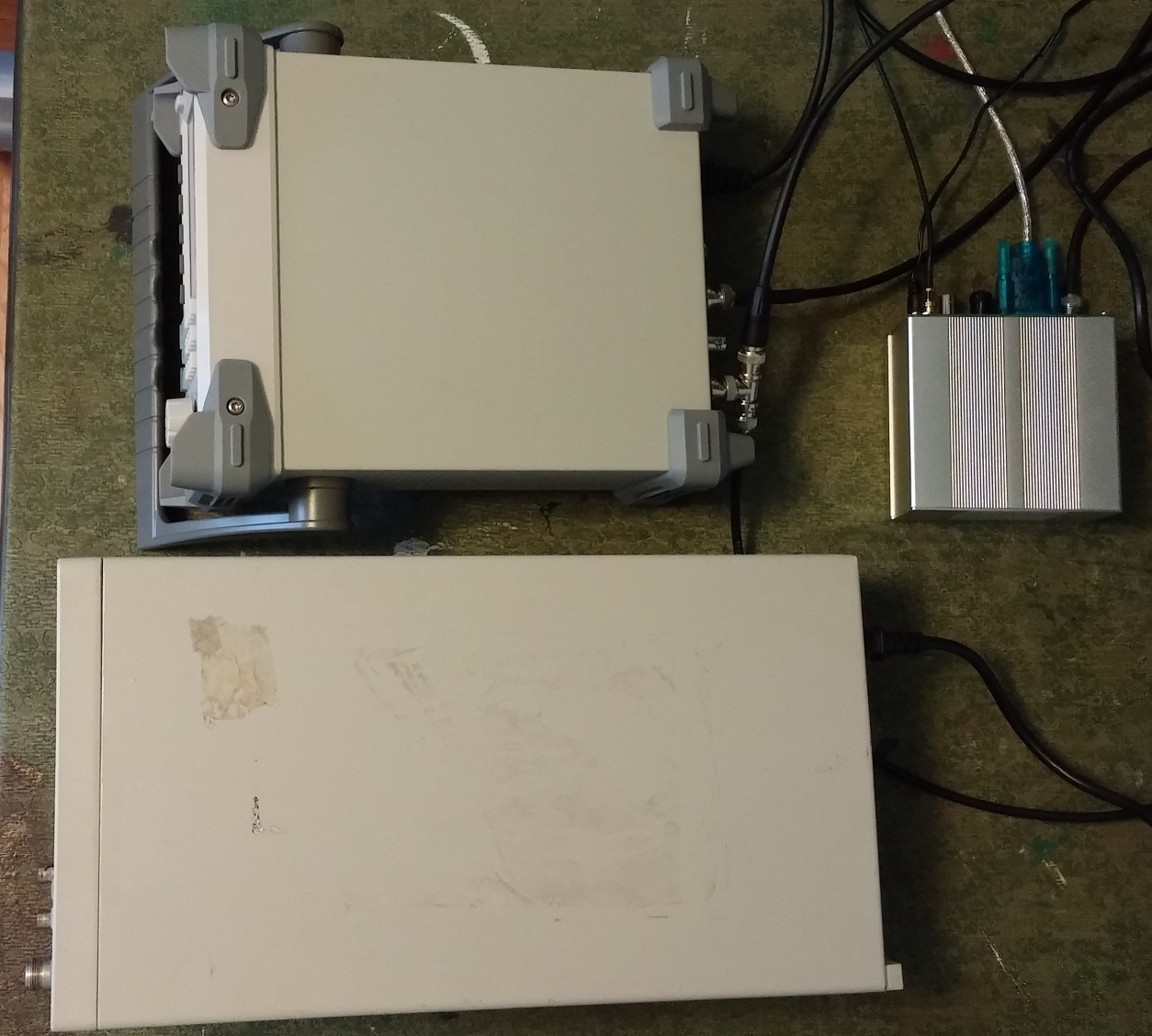
The unit powers up when plugged in and the fan starts whirring.... sort of annoying. Over the next few minutes it cranks up at least 3 times to be rather loud for such an instrument.... but at least it's off in standby (though I'm sure the OCXO is still going)
The model number is a PM6690/AN, which isn't listed as an official spec in Fluke's datasheet... it's supposed to have a three digit code not a two letter one. Also fluke never mentions a 2.7GHz channel C option, they start at 3GHz. So I navigate to the information menu...
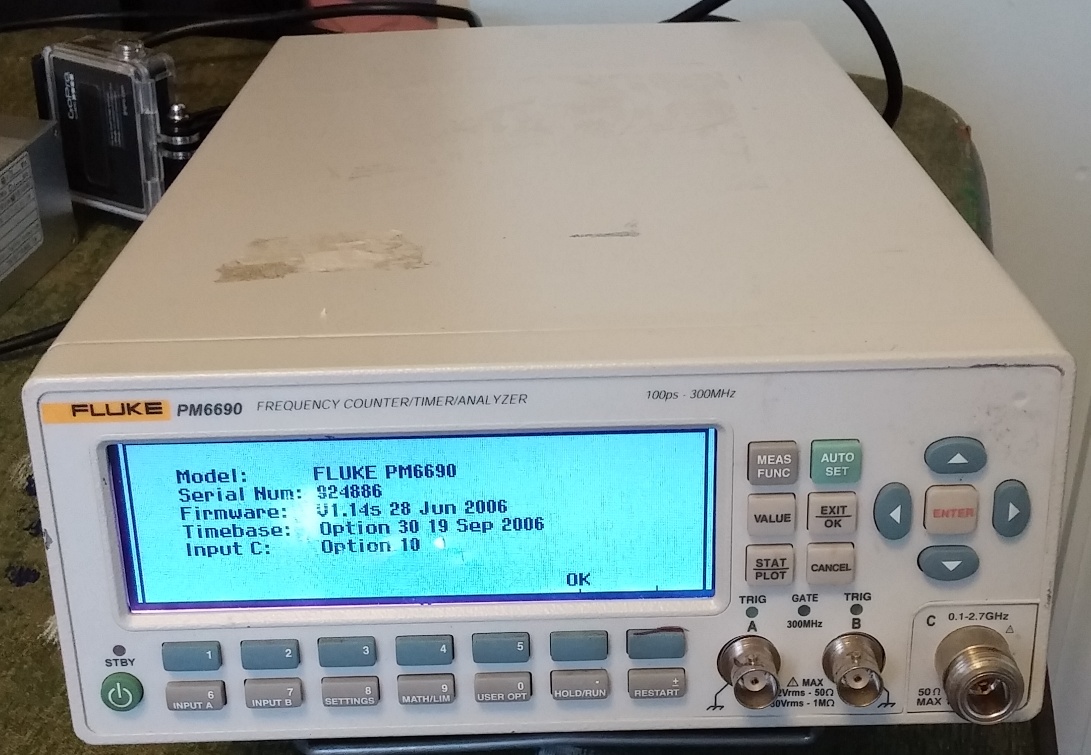
...and the installed option codes aren't listed on Fluke's datasheets..... but they are listed as valid options for the CNT-90. The option 30 timebase is their mid tier OCXO (a notch under the best and two up from the base) and option 10 is the 3GHz input C - not the 2.7GHz specified on the front, but in the datasheet it breaks down the input voltage range for different bands and 2.7-3GHz is the lowest - maybe that wasn't to Fluke's desired spec so they said only 2.7GHz? Also the firmware is from 2006, as is the boards, I found after I opened it up.
Of course, I knew the screen had some damage, but I didn't expect the backlight to die in the first hour - was making odd waving patterns in the beginning, then went to half brightness for a bit, then just went out.
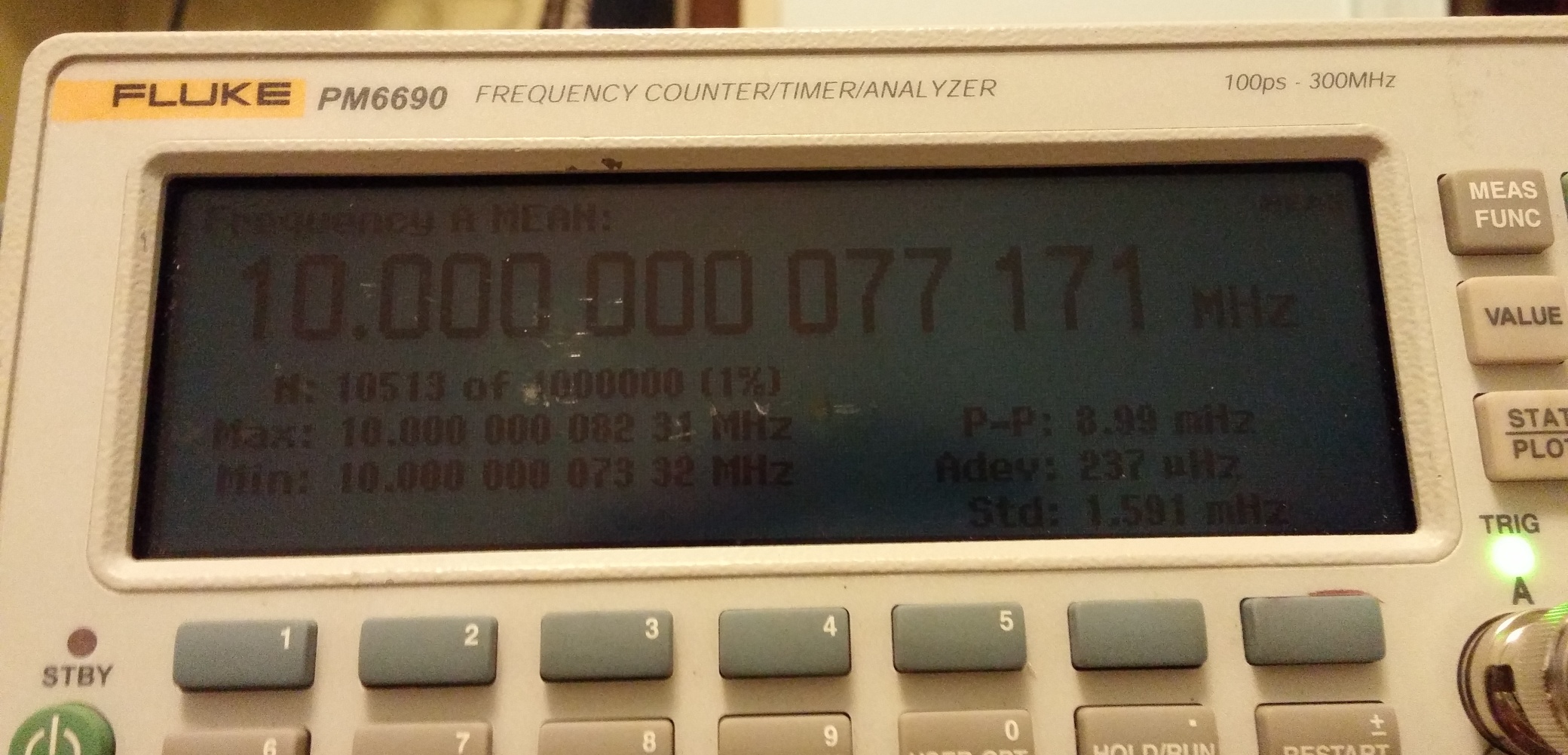
It was time to dig into the thing.
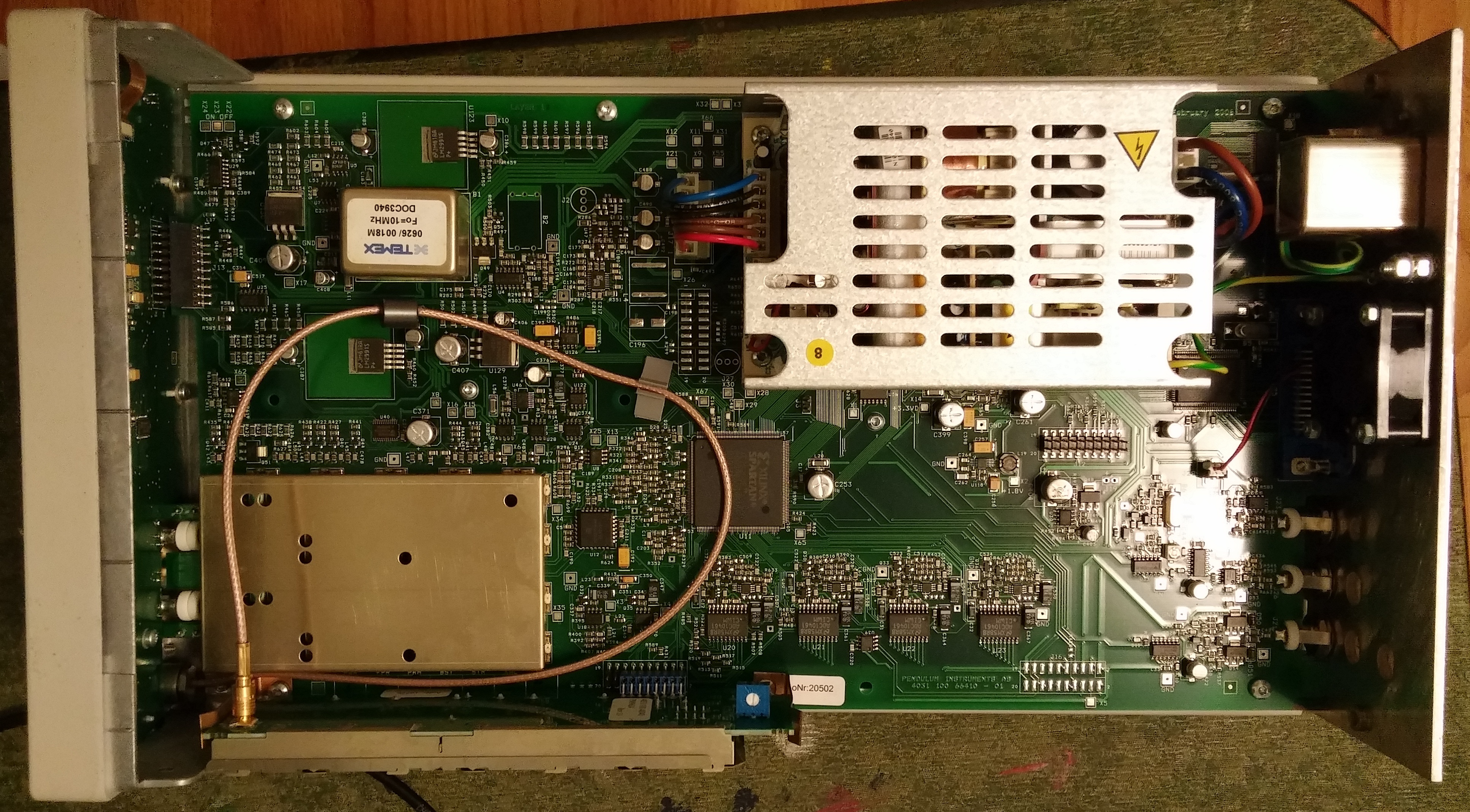
Pretty clean inside, pretty solid construction, no loose bits and no obvious damage or mods (the cal sticker had been broken by someone before me!) Also another confirmation that it basically is a CNT-90:
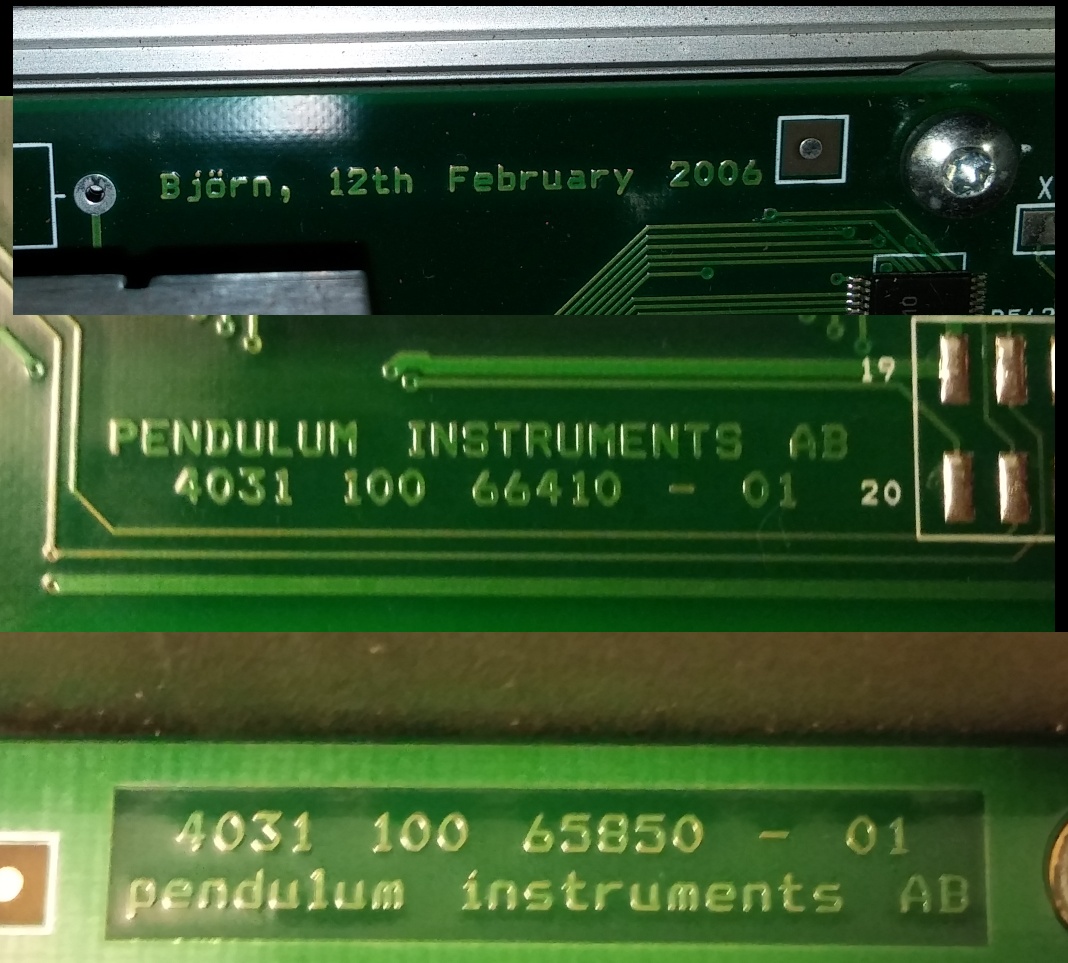
Thanks Bjorn!
The bottom of the board is just some decoupling:
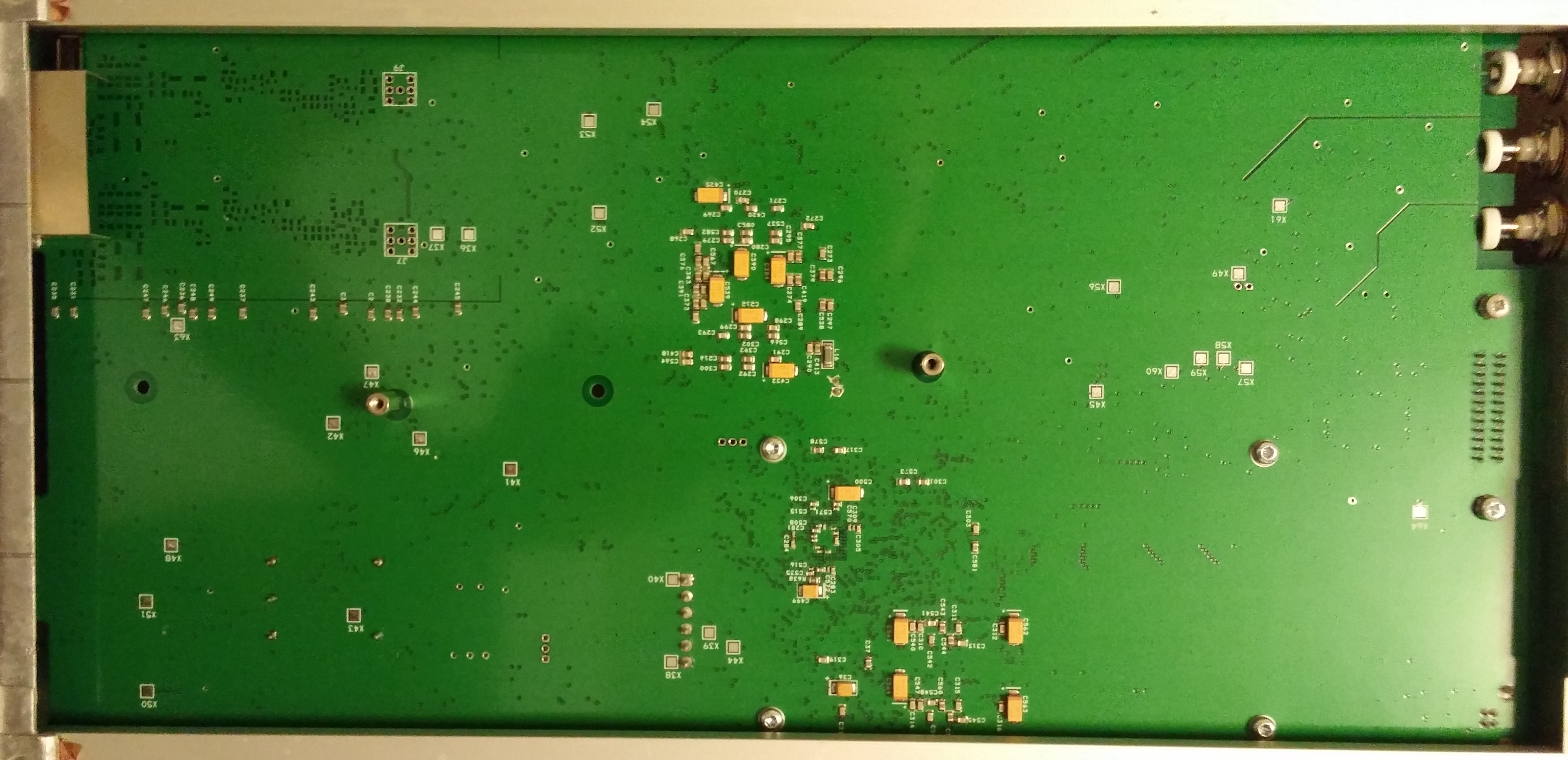
The input C board:
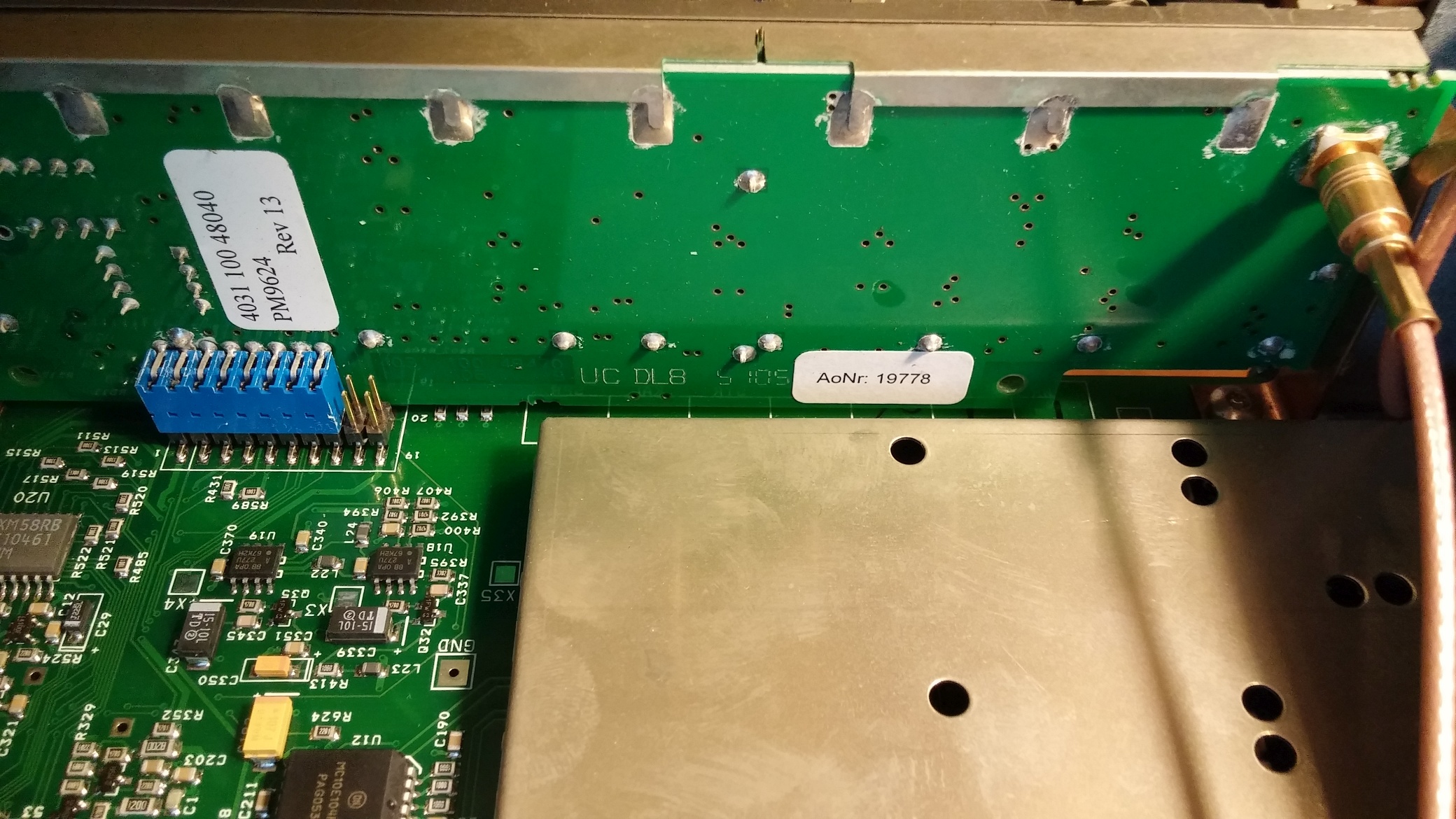
The timebase, a quick google doesn't give me much, but given where the performance is and the option code, I have a good idea.
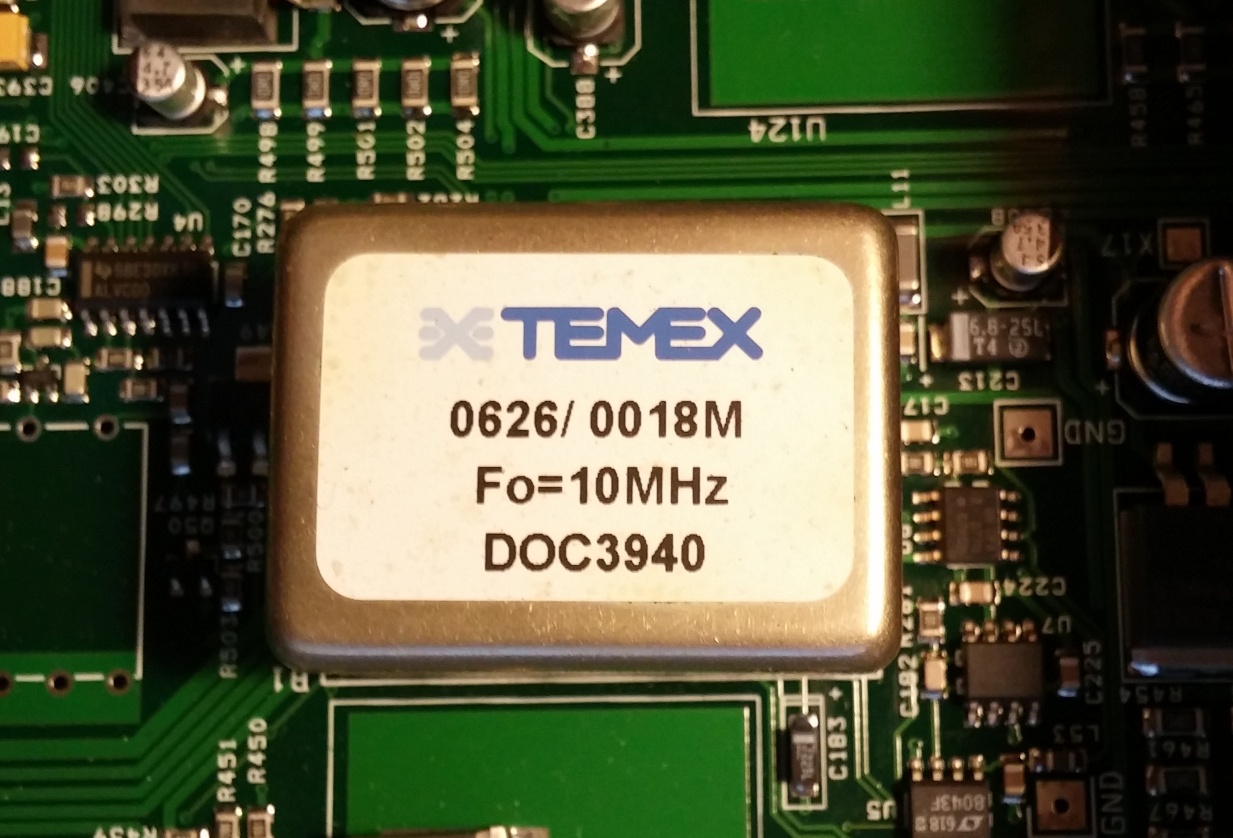
And hiding under the PSU there's actually a few chips... including this Sharp ARM SoC running the thing.
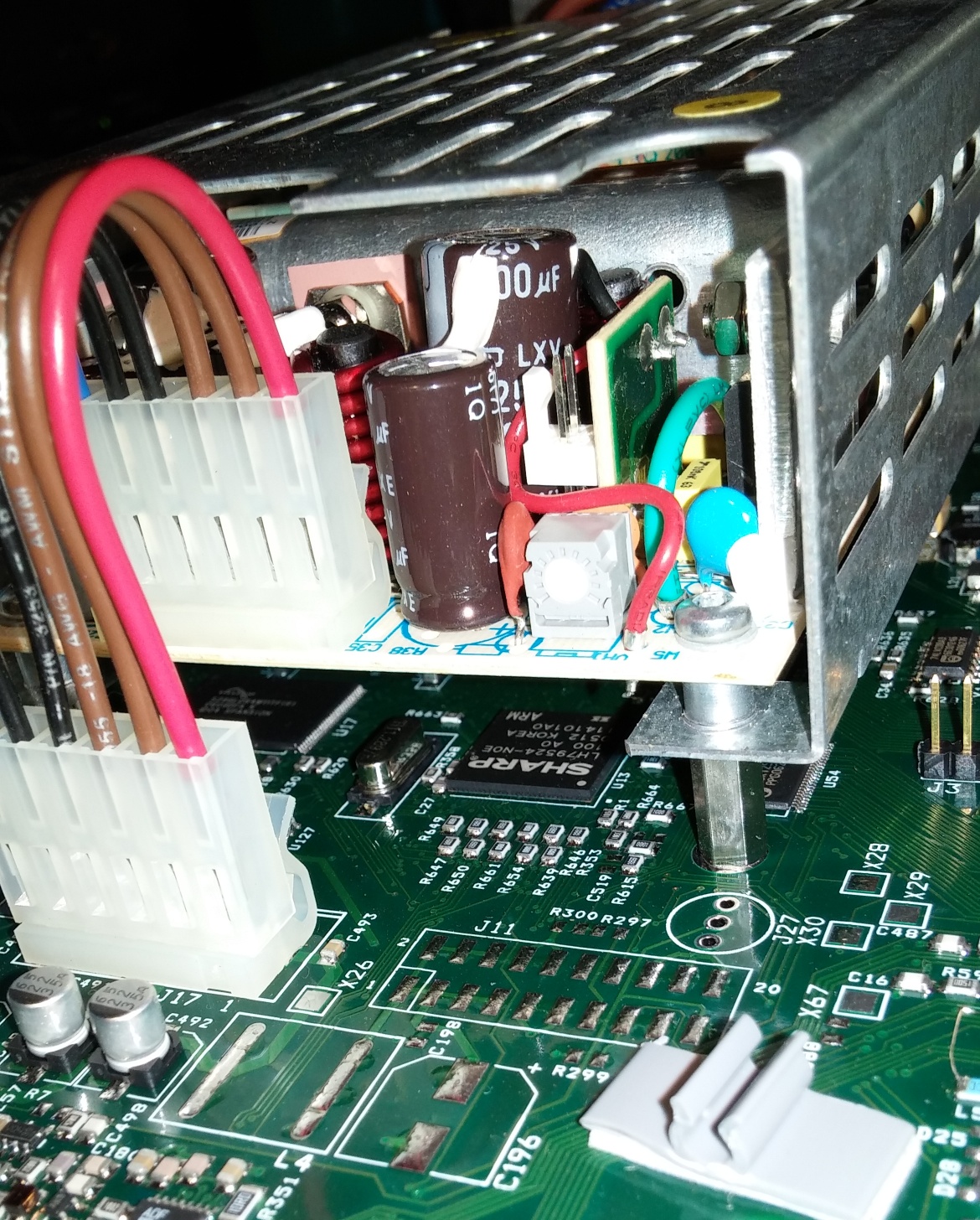
So I took off the front board with 2 screws (it's been all torx so far) and took a look. The schematic made it easy to find the backlight power, and it's just 5V to some LEDs built into the screen. I follow the trace and.... the solder joint is dry and looks cracked, one more on the other side of the screen too. So a little flux and solder later, and the backlight is back on. Still have some wavies in the screen (I scope probed it when it was dead and the power line was stable, but may be worth probing again), but the light has been going for hours and seems fine to me.
The noisy fan is actually a decent fan (NMB) that is pretty quiet uninstalled. there's no vibration damping and because it's right up against the chassis, the fan grille actually blocks a lot of the airflow and makes most of the noise. I have a quieter one I want to install instead and will use some rubber washers and a little extra distance as well, but I'm surprised the thing needs a fan.... the highest temps I could find on the board were high 40s Celsius with the noncontact thermometer. Maybe they just have it to make sure things don't heat up too much for the OCXO when in a bad environment. And these high 40s, low 40s on the FPGA, were enough to kick the fan up a couple of notches even with the top off.
I've got it measuring my GPSDO output and it seems to be pretty spot on for the specs (I though the GPSDO is not characterized or Cal'd, so it's unofficial), even with the top off the drift doesn't seem to be too much. I'm quite happy with it so far, will have to hook it up to USB and see if there's some new firmware and whatnot, then see how it triggers off other waves with the function gen - maybe see how much the function gen jitters by piping the GPSDO into both of them.
